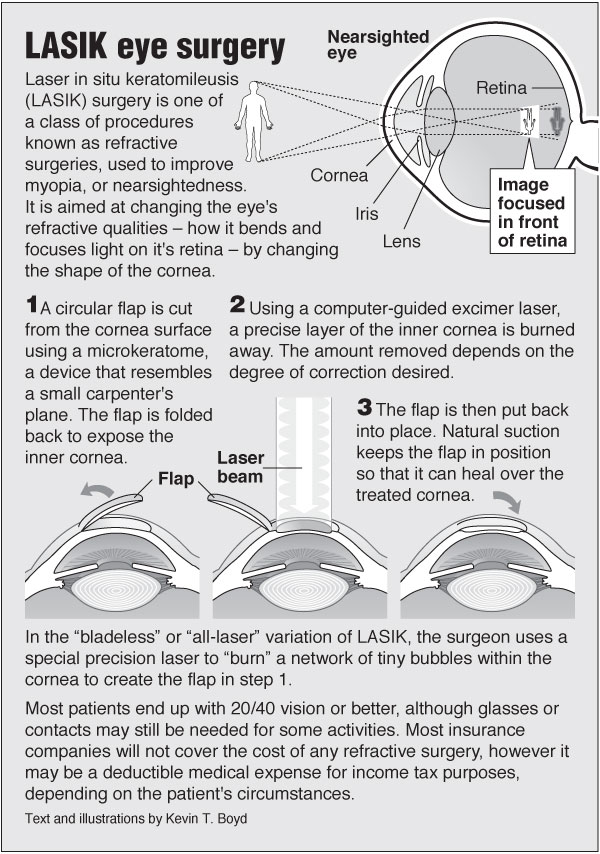How Astigmatism Affects Vision - Usual Misconceptions And Mistaken Beliefs

Created by-Kamp Knight
Astigmatism is a typical eye condition that blurs distance as well as near vision. It takes place when the front surface of your eye (cornea) isn't uniformly rounded, yet rather formed like an egg or a football. This abnormality affects just how your eyes bend light, causing blurred vision.
It is essential to have an extensive eye examination to discover astigmatism early and manage it with prescription lenses or LASIK surgical treatment. This can lower the requirement for scrunching up your eyes, which can create persistent eye strain.
Misconception 1: Astigmatism is caused by squinting
Unlike most eye issues, astigmatism is not caused by squinting. Rather, it's the outcome of irregularities in the eye's cornea as well as lens that lead to fuzzy vision.
Normally, the cornea and lens at the front of your eye have a rounded form that enables light to concentrate dramatically on the retina at the back of your eyeball. With astigmatism, the cornea as well as lens have more of an elongate form, creating light to bend erratically when entering your eye. This can create your vision to be blurry in any way distances.
People with astigmatism may squint to try to boost their fuzzy vision, which can bring about eye stress and headaches. It is essential to see a qualified eye care expert immediately if you notice squinting or various other indicators of astigmatism. Your optometrist can recommend restorative glasses or contact lenses to aid you see plainly whatsoever ranges. Astigmatism is one of one of the most common refractive mistakes that burglarizes people of clear vision, together with nearsightedness (nearsightedness), hyperopia (farsightedness) as well as presbyopia (aging blur). It influences adults and also kids alike.
Myth 2: Astigmatism is a hereditary problem
Astigmatism is a refractive mistake created when your cornea or lens have an irregular curve. This mismatch creates light that enters your eye to be curved unevenly, which can create blurry vision whatsoever ranges. Many people who have astigmatism are born with it, but some may get it from eye injuries, conditions or surgery. Eye treatment experts aren't certain why the shape of one's cornea or lens differs from one person to another, yet they do recognize that it is hereditary as well as can be given with generations.
There are 2 kinds of astigmatism: routine as well as uneven. A normal astigmatism means that your cornea - the clear front layer of the eye - isn't completely round like a basketball, however it is much more elongated, formed much more like a football. This means that the light entering your eye strikes the retina at greater than one point, which leads to blurry or altered vision. The various other type of astigmatism is irregular astigmatism, which implies that your cornea and/or lens are bent in greater than one direction or steeper in the bottom than the top.
Misconception 3: Astigmatism is permanent
A lot of astigmatism is hereditary. Yet it can additionally be triggered by eye injuries, surgical procedure, aging, or scarring. please click the up coming document could also create from the shape of your cornea or lens. The main reason is when the principal meridians of your eyes (the steepest as well as flattest parts) are not perpendicular per other. LASIK Washington blurred vision due to the fact that the retina can't concentrate plainly on the picture.
It is very important to visit an ophthalmologist if you observe any type of adjustments in your vision. Prompt sees can assist capture more major issues, such as keratoconus. This problem causes the cornea to slim and end up being a lot more conical. This makes it hard to see and also can influence depth understanding. Rubbing your eyes can boost your threat for this illness, also. Dry eyes as well as allergic reactions can also add to the problem. The most typical treatment for astigmatism includes corrective lenses, which can consist of glasses or call lenses. Various other options include orthokeratology, which makes use of inflexible call lenses to reshape the cornea, or laser surgery.
Myth 4: Astigmatism is painful
The eye is made to filter light into the retina and concentrate it onto the back of the eye (the cornea or lens). When these structures are misshapen, nevertheless, vision can be fuzzy. This refractive error can be corrected with prescription eyeglasses and also contact lenses or by having astigmatic keratotomy surgery, which includes making tiny cuts on the steepest curves of the cornea.
The most usual symptom of astigmatism is obscured vision, which can make it difficult to read or see things distant, even when you are sitting close to them. You may also have problem evaluating ranges or seeing clearly during the night, when you are more likely to experience glare and halos around lights.
It is possible to develop astigmatism at any kind of age or after an eye injury, yet most individuals are born with this refractive mistake. Astigmatism can aggravate as the eyes ages, which is why it is important to have normal eye tests to identify as well as treat any type of changes in your vision.

